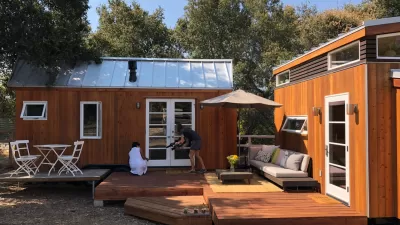The state recently legalized accessory dwelling units in residential districts, but there’s more state lawmakers can do to reduce other hurdles to large-scale ADU production.

An analysis from the Niskanen Cetner by George Ashford, Andrew Justus, Alex Armlovich reveals lessons for Hawaii based on California’s legalization of accessory dwelling units (ADUs), which Hawaii legalized earlier this year.
More states and cities are encouraging the construction of ADUs as one way to boost the housing supply, gently increase density in residential areas, and offer an avenue for homeowners to earn extra income. In Hawaii, SB3203 requires the creation of new zoning districts that permit at least two ADUs on single-family lots.
“Unlike in California, where pro-housing legislators have spent nearly a decade easing ADU restrictions, Hawaii law allows local governments to set restrictive development standards for ADUs. This is not uncommon; most states making their first effort to allow ADUs leave exploitable loopholes, which result in underwhelming initial outcomes.” The authors suggest that Hawaii should follow California’s lead to ensure that local governments don’t impose undue burdens on potential ADU builders.
The article highlights California’s successes, noting that “California saw nearly 28,000 ADU permits in 2023, constituting 21% of total housing permits for that year.” To address restrictions that hold back ADU development like minimum lot sizes, floor-area ratio, street frontage, and setback requirements, California passed a ‘statewide exemption ADU’ that sets standards for ADUs that override local regulations. “In other words, it requires local governments to waive requirements that would make a reasonably sized ADU infeasible.”
The analysis addresses other hurdles including unnecessary fees, parking requirements, and owner-occupancy requirements, which can also limit the effectiveness of ADU legalization. To further streamline the development process, California also requires cities to create a set of pre-approved building plans that homeowners can choose from to avoid lengthy permitting processes. This type of policy can both reduce costs for homeowners and let cities have more influence over aesthetics and design.
FULL STORY: What Hawaii can learn from California’s long and bumpy road to ADU stardom

Planetizen Federal Action Tracker
A weekly monitor of how Trump’s orders and actions are impacting planners and planning in America.

Congressman Proposes Bill to Rename DC Metro “Trump Train”
The Make Autorail Great Again Act would withhold federal funding to the system until the Washington Metropolitan Area Transit Authority (WMATA), rebrands as the Washington Metropolitan Authority for Greater Access (WMAGA).

The Simple Legislative Tool Transforming Vacant Downtowns
In California, Michigan and Georgia, an easy win is bringing dollars — and delight — back to city centers.

The States Losing Rural Delivery Rooms at an Alarming Pace
In some states, as few as 9% of rural hospitals still deliver babies. As a result, rising pre-term births, no adequate pre-term care and harrowing close calls are a growing reality.

The Small South Asian Republic Going all in on EVs
Thanks to one simple policy change less than five years ago, 65% of new cars in this Himalayan country are now electric.

DC Backpedals on Bike Lane Protection, Swaps Barriers for Paint
Citing aesthetic concerns, the city is removing the concrete barriers and flexposts that once separated Arizona Avenue cyclists from motor vehicles.
Urban Design for Planners 1: Software Tools
This six-course series explores essential urban design concepts using open source software and equips planners with the tools they need to participate fully in the urban design process.
Planning for Universal Design
Learn the tools for implementing Universal Design in planning regulations.
Smith Gee Studio
City of Charlotte
City of Camden Redevelopment Agency
City of Astoria
Transportation Research & Education Center (TREC) at Portland State University
US High Speed Rail Association
City of Camden Redevelopment Agency
Municipality of Princeton (NJ)





























